Marie Laval's Blog, page 15
June 12, 2013
Der Wundermann or the Original International Man of Mystery!
If you are interested in 18th century European history and the occult, in alchemy and secret societies, then you have probably come across the elusive and mysterious Count Saint Germain.
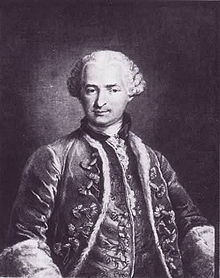 The only known portrait of Count Saint-Germain
The only known portrait of Count Saint-Germain
Why the lasting fascination for this character? Was he the illegitimate son of European royals or just a spy? Was he an alchemist who could 'make' gold nuggets and huge diamonds, a Rosicrucian who had mastered the secrets of eternal life or a charlatan? In his correspondence with Frederick the Great of Prussia, Voltaire called him 'Der Wundermann' and said that he was 'a man who knows everything and who never dies' (although the philosopher being known for his irony, we can presume that he was joking).
It is easy to understand why such a character has fascinated people for so long. Not only did Saint-Germain cultivate the mystery around his lineage, but his name was also linked to powerful secret societies - the Freemasons and Rosicrucian.
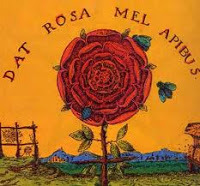
Were his parents Francis II Rackoczy, Prince of Transylvania, and Princess Violenta-Beatrice of Bavaria, like he confided to Prince Karl of Hesse-Kessel, or was he the illegitimate offspring of Marie-Anne de Neubourg, Queen of Spain? If no one knows for sure who his parents were, it is however established that he was raised in Italy by a member of the Medici family and attended the university of Sienna.
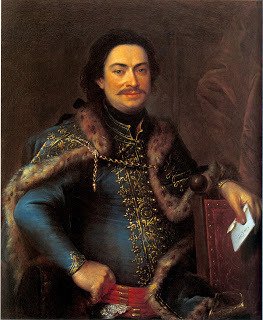 Prince Francis II Rakoczy of Transylvania
Prince Francis II Rakoczy of Transylvania
He seemed to possess a vast fortune, was always immaculately dressed and had a predilection for precious stones. He spoke several languages fluently, had a charismatic personality. A virtuoso violin player, he composed sonatas and arias. He was also a talented painter and a scientist interested in new processes to dye fabrics. He mixed in the most exclusive circles, and travelled extensively under different names (he called himself Surmont in Belgium, Count Tsarogy in Bavaria, Count Welldone in Germany...)
It is during the Jacobite rebellion that the Count's name first appears in official documents. In a 1745 letter to Horace Mann, Horace Walpole writes that a man who calls himself Saint-Germain has been arrested, then released without charge although it is believed that he is a spy. Walpole writes that the man is 'mad' and certainly 'not a gentleman' despite possessing a vast fortune and playing the violin 'wonderfully'. He then comments about Saint-Germain never having 'any dealings with a woman or a succedaneum' (a substitute??). As for his appearance, it seems at odds with the only known portrait of him, since Walpole describes him as having 'extremely black hair' and a beard.
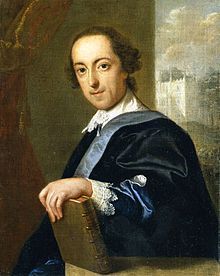 Horace Walpole
Horace Walpole
Saint-Germain reappears twelve years later in France when he is introduced to the French court by Maréchal Belle-Isle. He is granted quarters at the chateau of Chambord and quickly becomes a favourite of Louis XV and his mistress, Madame de Pompadour. The French King gives him a hundred thousand Francs and a laboratory to invent new dying processes for fabrics. More importantly, he starts using him as a secret agent, against the advice of his minister for foreign affairs, the Duc de Choiseul, who is deeply suspicious of the Count.
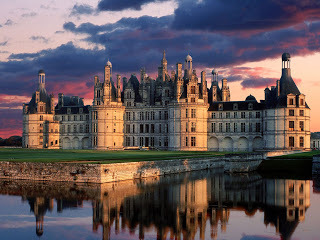
Things then become even more blurry. Desperate to discredit Saint-Germain, the duc de Choiseul hires an actor named Gauve to impersonate him. The fake Saint-Germain parades in fashionable salons, spreading ridiculous stories about being hundreds of years old, and having met Greek philosophers, Alexander the Great and even Jesus, to whom he predicted 'an abominable end'. When Gauve is found out, Choiseul's plan fails miserably. Instead of discrediting Saint-Germain, he only added to the man's appeal and mystery, and made him even more popular at court.
Soon people comment on how he never seems to age but retains the appearance of a man between forty and fifty years old. A Comtesse de Gergy tells Madame de Pompadour that he hasn't changed at all since she met him in Venice in 1710, where he supposedly gave her an elixir of youth (see below for receipe). The legend of Saint-Germain is born: does he really possess the secret of eternal life?
Although invited to many dinner parties, Saint-Germain is never seen eating in public. In fact, he says he only eats a kind of oatmeal mixture he prepares himself, and drinks an elixir made of elderflowers, fennel and senna pods soaked in spirit wine (senna pods? Aren't they used in laxatives?) which he advises fashionable ladies to take if they want to retain their youthful appearance.
In 1760, Choiseul almost manages to arrest Saint-Germain after the King sends him on a secret mission in Amsterdam, but the elusive Count escapes to England. After a couple of years, Saint-Germain travels to Belgium where he buys land under an assumed name. He then goes back to France in 1775 where he is rumoured to have warned Queen Marie-Antoinette about the impending revolution which would put in place a 'bloodthirsty republic' instead of royal power.
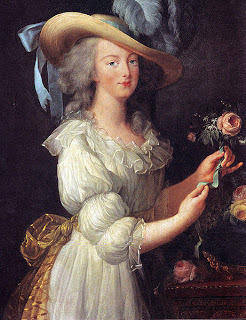
After more travels, Saint-Germain finally settles at the court of Prince Karl of Hesse-Kassel in the duchy of Schleswig-Holstein. The Prince is so taken by Saint-Germain that he calls him 'Old Papa'. He buys a factory near Gottorp, on the Baltic sea, for Saint-Germain to experiment with various fabric dying processes. He even writes to Jean-Baptiste Willermoz, a silk merchant in Lyon and sends samples of the Saint-Germain's dyes in the hope of getting him interested in a joint venture. The project however never sees the light of day. Count Saint-Germain dies of pneumonia on 27th February 1784.
Or does he?
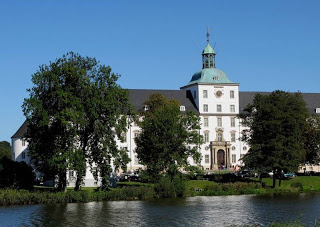
Even though his death is registered in St Nikolai church at Eckernförde and it is recorded that he was buried in tomb No1 inside the church, there are soon rumours that Saint-Germain is still alive. Over the following decades, people swear to have spoken to him. One of them, Comtesse d'Adhemar, one of Marie-Antoinette's ladies in waiting, claims she saw him in 1815 and again in 1821!
Count Saint-Germain is one of the 18th century's most mysterious characters. I was always fascinated by the many tales and stories surrounding him, so much so that he was my inspiration for my debut historical romance Angel Heart. In the novel, my heroin Marie-Ange, whose mother was Saint-Germain' goddaughter, has to retrieve a mysterious Templar relic of which Saint-Germain was made guardian and which is said to give eternal life...
 Angel Heart is published by MuseitUp Publishing and is available from:
Angel Heart is published by MuseitUp Publishing and is available from:
http://www.amazon.co.uk/Angel-Heart-ebook/dp/B009YJT194
http://www.amazon.com/Angel-Heart-ebook/dp/B009YJT194/ref=sr_1_2?s=books&ie=UTF8&qid=1371069109&sr=1-2
 The only known portrait of Count Saint-Germain
The only known portrait of Count Saint-GermainWhy the lasting fascination for this character? Was he the illegitimate son of European royals or just a spy? Was he an alchemist who could 'make' gold nuggets and huge diamonds, a Rosicrucian who had mastered the secrets of eternal life or a charlatan? In his correspondence with Frederick the Great of Prussia, Voltaire called him 'Der Wundermann' and said that he was 'a man who knows everything and who never dies' (although the philosopher being known for his irony, we can presume that he was joking).
It is easy to understand why such a character has fascinated people for so long. Not only did Saint-Germain cultivate the mystery around his lineage, but his name was also linked to powerful secret societies - the Freemasons and Rosicrucian.

Were his parents Francis II Rackoczy, Prince of Transylvania, and Princess Violenta-Beatrice of Bavaria, like he confided to Prince Karl of Hesse-Kessel, or was he the illegitimate offspring of Marie-Anne de Neubourg, Queen of Spain? If no one knows for sure who his parents were, it is however established that he was raised in Italy by a member of the Medici family and attended the university of Sienna.
 Prince Francis II Rakoczy of Transylvania
Prince Francis II Rakoczy of TransylvaniaHe seemed to possess a vast fortune, was always immaculately dressed and had a predilection for precious stones. He spoke several languages fluently, had a charismatic personality. A virtuoso violin player, he composed sonatas and arias. He was also a talented painter and a scientist interested in new processes to dye fabrics. He mixed in the most exclusive circles, and travelled extensively under different names (he called himself Surmont in Belgium, Count Tsarogy in Bavaria, Count Welldone in Germany...)
It is during the Jacobite rebellion that the Count's name first appears in official documents. In a 1745 letter to Horace Mann, Horace Walpole writes that a man who calls himself Saint-Germain has been arrested, then released without charge although it is believed that he is a spy. Walpole writes that the man is 'mad' and certainly 'not a gentleman' despite possessing a vast fortune and playing the violin 'wonderfully'. He then comments about Saint-Germain never having 'any dealings with a woman or a succedaneum' (a substitute??). As for his appearance, it seems at odds with the only known portrait of him, since Walpole describes him as having 'extremely black hair' and a beard.
 Horace Walpole
Horace WalpoleSaint-Germain reappears twelve years later in France when he is introduced to the French court by Maréchal Belle-Isle. He is granted quarters at the chateau of Chambord and quickly becomes a favourite of Louis XV and his mistress, Madame de Pompadour. The French King gives him a hundred thousand Francs and a laboratory to invent new dying processes for fabrics. More importantly, he starts using him as a secret agent, against the advice of his minister for foreign affairs, the Duc de Choiseul, who is deeply suspicious of the Count.

Things then become even more blurry. Desperate to discredit Saint-Germain, the duc de Choiseul hires an actor named Gauve to impersonate him. The fake Saint-Germain parades in fashionable salons, spreading ridiculous stories about being hundreds of years old, and having met Greek philosophers, Alexander the Great and even Jesus, to whom he predicted 'an abominable end'. When Gauve is found out, Choiseul's plan fails miserably. Instead of discrediting Saint-Germain, he only added to the man's appeal and mystery, and made him even more popular at court.
Soon people comment on how he never seems to age but retains the appearance of a man between forty and fifty years old. A Comtesse de Gergy tells Madame de Pompadour that he hasn't changed at all since she met him in Venice in 1710, where he supposedly gave her an elixir of youth (see below for receipe). The legend of Saint-Germain is born: does he really possess the secret of eternal life?
Although invited to many dinner parties, Saint-Germain is never seen eating in public. In fact, he says he only eats a kind of oatmeal mixture he prepares himself, and drinks an elixir made of elderflowers, fennel and senna pods soaked in spirit wine (senna pods? Aren't they used in laxatives?) which he advises fashionable ladies to take if they want to retain their youthful appearance.
In 1760, Choiseul almost manages to arrest Saint-Germain after the King sends him on a secret mission in Amsterdam, but the elusive Count escapes to England. After a couple of years, Saint-Germain travels to Belgium where he buys land under an assumed name. He then goes back to France in 1775 where he is rumoured to have warned Queen Marie-Antoinette about the impending revolution which would put in place a 'bloodthirsty republic' instead of royal power.

After more travels, Saint-Germain finally settles at the court of Prince Karl of Hesse-Kassel in the duchy of Schleswig-Holstein. The Prince is so taken by Saint-Germain that he calls him 'Old Papa'. He buys a factory near Gottorp, on the Baltic sea, for Saint-Germain to experiment with various fabric dying processes. He even writes to Jean-Baptiste Willermoz, a silk merchant in Lyon and sends samples of the Saint-Germain's dyes in the hope of getting him interested in a joint venture. The project however never sees the light of day. Count Saint-Germain dies of pneumonia on 27th February 1784.
Or does he?

Even though his death is registered in St Nikolai church at Eckernförde and it is recorded that he was buried in tomb No1 inside the church, there are soon rumours that Saint-Germain is still alive. Over the following decades, people swear to have spoken to him. One of them, Comtesse d'Adhemar, one of Marie-Antoinette's ladies in waiting, claims she saw him in 1815 and again in 1821!
Count Saint-Germain is one of the 18th century's most mysterious characters. I was always fascinated by the many tales and stories surrounding him, so much so that he was my inspiration for my debut historical romance Angel Heart. In the novel, my heroin Marie-Ange, whose mother was Saint-Germain' goddaughter, has to retrieve a mysterious Templar relic of which Saint-Germain was made guardian and which is said to give eternal life...
 Angel Heart is published by MuseitUp Publishing and is available from:
Angel Heart is published by MuseitUp Publishing and is available from:http://www.amazon.co.uk/Angel-Heart-ebook/dp/B009YJT194
http://www.amazon.com/Angel-Heart-ebook/dp/B009YJT194/ref=sr_1_2?s=books&ie=UTF8&qid=1371069109&sr=1-2
Published on June 12, 2013 13:36
June 10, 2013
Find out all about unicorns with Suzanne de Montigny
Today I am venturing into the world of children literature, and in particular the wonderful 'The Shadow of the Unicorn', a fantasy by Suzanne de Montigny which is aimed at children between the ages of nine and twelve years old.
So let's find out a little about her book, and about unicorns of course...
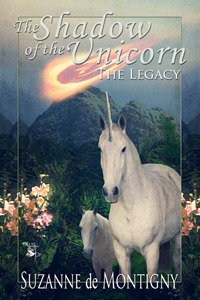
Hello Suzanne and thank you for coming on the blog today. What attracted you to unicorns and what can tell us about them?
Ah yes, unicorns. One of my most favourite topics of conversation. They’re beautiful creatures: pure white except for their hooves, and with a spiral horn that crowns their head. They’re smaller than horses and even have different hoof prints. They neigh, whinny, bray, and hee-haw. Plus they sing on beautiful nights. But it’s not regular singing like we human folk do. They create a cacophony of noises in rhythm. They whinny, sneeze, rumble and neigh. Even the other animals join in from afar. And did I mention they have healing powers in their horns? That’s why they were considered very valuable by the tyrant, Ishmael, many thousands of year ago when dinosaurs, mammals, and humans, dwelt the earth together.
They have healing powers in their horns?Yes, one touch of the horn can cure bubonic plague, but their healing powers aren’t meant for constant use. They need time to recuperate, so when Ishmael captures one of the herds and exploits it, he becomes the town hero but at the expense of the lives of nine unicorns.
Nine unicorns? How terrible.Yes, but he doesn’t want to stop there. He wants to harvest their horns to sell as a healing powder.
It almost sounds like what happens today in Africawhere hunters poach elephants and rhinos for the ivory in their horns.Exactly my point. You’ve got it! That’s the underlying message behind my story. Here, kids get to experience what elephants and rhinos live through from the point of view of magical creatures.
So is there hope for the unicorns?Yes. Darius-the-seer, the last surviving dinosaur, teaches Azaria some tricks to outsmart Ishmael, but I won’t tell you what. You have to read the book.
 I understand you give half of all your profits to the Third World Eye Care Society. How did this come to be?
I understand you give half of all your profits to the Third World Eye Care Society. How did this come to be?
I’m a great believer that everything happens for a reason. Last summer, I developed a frightening vision problem. For some reason, I had a wash-out spot in the middle of my right eye. It kept getting worse and worse and soon, I couldn’t read the newspaper without a magnifying glass. I was very quickly ushered into the office of one of B.C.’s top ophthalmologists who not only ran numerous tests on me, but also sent me to see several other specialists – all for free. And I got to thinking that in third world countries, many people can’t afford eye care at all. Many children go without the glasses they need to read. And so I became involved with TWECS.
It sounds like a really worthwhile charity. What are you working on at the moment?I’m working on two novels right now – the second of The Shadow of the Unicorn series, and another very creepy middle grade/YA novel entitled: A Town Bewitched. It’s a story about a child prodigy in classical violin growing up in a small town. Her best friend is a girl adopted into a white family from China. As you can imagine, they have trouble fitting in and to make matters worse, Kira’s dad passed away from cancer. A strange guest attends his funeral – a red-headed fiddler with strange blue eyes, who takes over the whole town by bewitching them with her Celtic music. When someone vandalises the town, leaving dead and gutted birds as a calling card, only Kira knows who the real perpetrator is. But will anyone believe her?
Well Suzanne, I wish you good luck with your two projects. Thank you very much for coming on the blog today. Where can we find your novel?You can buy it at the following links:
http://www.amazon.co.uk/The-Shadow-Unicorn-Legacy-ebook/dp/B00AIVD5EE
http://www.amazon.com/The-Shadow-Unicorn-Legacy-ebook/dp/B00AIVD5EEhttps://museituppublishing.com/bookstore2/index.php?page=shop.product_details&flypage=flypage.tpl&product_id=466&category_id=69&manufacturer_id=230&option=com_virtuemart&Itemid=1
http://www.kobobooks.com/search/search.html?q=the+shadow+of+the+unicorn%3A+the+legacy
Here the trailer for 'Shadow of the Unicorn'
http://youtu.be/St9OsyK974o

So let's find out a little about her book, and about unicorns of course...

Hello Suzanne and thank you for coming on the blog today. What attracted you to unicorns and what can tell us about them?
Ah yes, unicorns. One of my most favourite topics of conversation. They’re beautiful creatures: pure white except for their hooves, and with a spiral horn that crowns their head. They’re smaller than horses and even have different hoof prints. They neigh, whinny, bray, and hee-haw. Plus they sing on beautiful nights. But it’s not regular singing like we human folk do. They create a cacophony of noises in rhythm. They whinny, sneeze, rumble and neigh. Even the other animals join in from afar. And did I mention they have healing powers in their horns? That’s why they were considered very valuable by the tyrant, Ishmael, many thousands of year ago when dinosaurs, mammals, and humans, dwelt the earth together.
They have healing powers in their horns?Yes, one touch of the horn can cure bubonic plague, but their healing powers aren’t meant for constant use. They need time to recuperate, so when Ishmael captures one of the herds and exploits it, he becomes the town hero but at the expense of the lives of nine unicorns.
Nine unicorns? How terrible.Yes, but he doesn’t want to stop there. He wants to harvest their horns to sell as a healing powder.
It almost sounds like what happens today in Africawhere hunters poach elephants and rhinos for the ivory in their horns.Exactly my point. You’ve got it! That’s the underlying message behind my story. Here, kids get to experience what elephants and rhinos live through from the point of view of magical creatures.
So is there hope for the unicorns?Yes. Darius-the-seer, the last surviving dinosaur, teaches Azaria some tricks to outsmart Ishmael, but I won’t tell you what. You have to read the book.
 I understand you give half of all your profits to the Third World Eye Care Society. How did this come to be?
I understand you give half of all your profits to the Third World Eye Care Society. How did this come to be?I’m a great believer that everything happens for a reason. Last summer, I developed a frightening vision problem. For some reason, I had a wash-out spot in the middle of my right eye. It kept getting worse and worse and soon, I couldn’t read the newspaper without a magnifying glass. I was very quickly ushered into the office of one of B.C.’s top ophthalmologists who not only ran numerous tests on me, but also sent me to see several other specialists – all for free. And I got to thinking that in third world countries, many people can’t afford eye care at all. Many children go without the glasses they need to read. And so I became involved with TWECS.
It sounds like a really worthwhile charity. What are you working on at the moment?I’m working on two novels right now – the second of The Shadow of the Unicorn series, and another very creepy middle grade/YA novel entitled: A Town Bewitched. It’s a story about a child prodigy in classical violin growing up in a small town. Her best friend is a girl adopted into a white family from China. As you can imagine, they have trouble fitting in and to make matters worse, Kira’s dad passed away from cancer. A strange guest attends his funeral – a red-headed fiddler with strange blue eyes, who takes over the whole town by bewitching them with her Celtic music. When someone vandalises the town, leaving dead and gutted birds as a calling card, only Kira knows who the real perpetrator is. But will anyone believe her?
Well Suzanne, I wish you good luck with your two projects. Thank you very much for coming on the blog today. Where can we find your novel?You can buy it at the following links:
http://www.amazon.co.uk/The-Shadow-Unicorn-Legacy-ebook/dp/B00AIVD5EE
http://www.amazon.com/The-Shadow-Unicorn-Legacy-ebook/dp/B00AIVD5EEhttps://museituppublishing.com/bookstore2/index.php?page=shop.product_details&flypage=flypage.tpl&product_id=466&category_id=69&manufacturer_id=230&option=com_virtuemart&Itemid=1
http://www.kobobooks.com/search/search.html?q=the+shadow+of+the+unicorn%3A+the+legacy
Here the trailer for 'Shadow of the Unicorn'
http://youtu.be/St9OsyK974o

Published on June 10, 2013 09:25
June 4, 2013
Helena Fairfax is visiting today!
Today I am delighted to welcome Helena Fairfax whose debut novel, The Silk Romance, was released on Friday 24th May by MuseitUp Publishing, which happens to be my publishing house too. What is exciting for me is that Helena set her novel in Lyon, the town I grew up in! Her novel is wonderful and I absolutely love the cover!
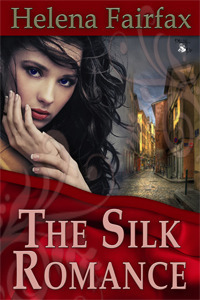 Bonjour Helena, and congratulations on the release of your novel.
Bonjour Helena, and congratulations on the release of your novel.
Bonjour Marie, and thank you so much for having me on your blog! When I found out that a fellow Muse author was actually from the city of Lyon, I was thrilled. It has long been one of my favourite cities, and forms the wonderful setting for my first novel, The Silk Romance.
I am very intrigued...Why did you choose Lyon for the setting of The Silk Romance?
You must be curious to know how someone from a small town in the north of England came to have this love for your city. Well, when I was a student – many years ago now! – I spent a few months in Lyon working as an au pair. (And by the way, I wish I had known you then, Marie. It would have been lovely to visit you in your home town J )As an au pair I lived with my family in the most romantic location, right on the banks of the river Saône, overlooking Lyon’s old town. Right beneath my window was a large, colourful market, full of beautiful fruits, and bustling with sounds and smells.
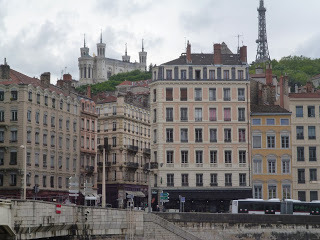 You can imagine the contrast for a young girl, coming from a bleak, grey town in England, to this wonderful, bright, sun-filled and vibrant city. Everywhere there are cafés and people spilling out into the streets, and for a young girl, the night-life was wonderful. The evenings were warm and it was possible to sit outside the bars and restaurants and relax with friends, in a way which is rarely possible in my chilly part of the world.So you can understand that when it came to writing my first novel, I wanted this beautiful city to be the setting. I also had another interest in Lyon. Some time after I left university, I started work at a woollen mill in Yorkshire. My home county of Yorkshire is famous for its woollen weaving industry, in the same way that Lyon is famous for its silk-weaving.
You can imagine the contrast for a young girl, coming from a bleak, grey town in England, to this wonderful, bright, sun-filled and vibrant city. Everywhere there are cafés and people spilling out into the streets, and for a young girl, the night-life was wonderful. The evenings were warm and it was possible to sit outside the bars and restaurants and relax with friends, in a way which is rarely possible in my chilly part of the world.So you can understand that when it came to writing my first novel, I wanted this beautiful city to be the setting. I also had another interest in Lyon. Some time after I left university, I started work at a woollen mill in Yorkshire. My home county of Yorkshire is famous for its woollen weaving industry, in the same way that Lyon is famous for its silk-weaving.
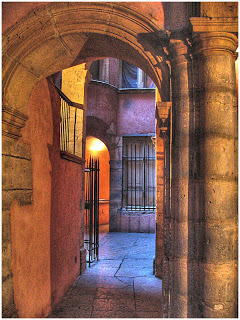 In fact, silk-weaving is literally built into the fabric of Lyon. All through the city you will find little covered stone alleyways, called traboules. These shadowy alleyways were used by the silk-workers, so that their rolls of cloth were protected from the rain. You can walk through many of the traboules today, and they are a fascinating reminder of Lyon’s past.
In fact, silk-weaving is literally built into the fabric of Lyon. All through the city you will find little covered stone alleyways, called traboules. These shadowy alleyways were used by the silk-workers, so that their rolls of cloth were protected from the rain. You can walk through many of the traboules today, and they are a fascinating reminder of Lyon’s past.
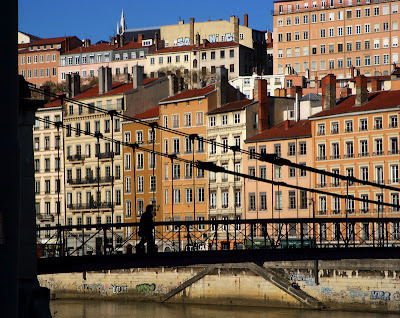
I decided to set my novel in a silk-weaving mill – a mill which is owned by the gorgeous hero of my novel, Jean-Luc Olivier. If you’d like to know more about silk-weaving in Lyon, I have written a post on the subject here on my blog: http://helenafairfax.com/2012/12/04/s....
And if you’d like to find out more about Jean-Luc, and my charming heroine Sophie, here is the blurb to The Silk Romance :
Jean-Luc Olivier is a courageous racing driver with the world before him. Sophie Challoner is a penniless student, whose face is unknown beyond her own rundown estate in London. The night they spend together in Paris seems to Sophie like a fairytale—a Cinderella story without the happy ending. She knows she has no part in Jean-Luc’s future. She made her dying mother a promise to take care of her father and brother in London. One night of happiness is all Sophie allows herself. She runs away from Jean-Luc and returns to England to keep her promise.
Safely back home with her father and brother, and immersed in her college work, Sophie tries her best to forget their encounter, but she reckons without Jean-Luc. He is determined to find out why she left him, and intrigued to discover the real Sophie. He engineers a student placement Sophie can’t refuse, and so, unwillingly, she finds herself back in France, working for Jean-Luc in the silk mill he now owns.
Thrown together for a few short weeks in Lyon, the romantic city of silk, their mutual love begins to grow. But it seems the fates are conspiring against Sophie’s happiness. Jean-Luc has secrets of his own. Then, when disaster strikes at home in London, Sophie is faced with a choice—stay in this glamorous world with the man she loves, or return to her family to keep the sacred promise she made her mother.If you’ve enjoyed my taster of Lyon, please come and visit me some time on my blog www.helenafairfax.com, on my Facebook page, on Goodreads, or you can find me on Twitter @helenafairfax I always love to meet new people J
The Silk Romance is available from the Muse bookstore, or from Amazon and most major e-tailers.
Merci beaucoup , Marie! Thanks very much for inviting me to your blog. It’s been great to meet you here, amongst so many reminders of my happy time in your home town.
À bientôt !Thank you for being a guest today Helena and 'bonne chance' with The Silk Romance. I really enjoyed your novel and I must say that I fell in love with Jean-Luc...
 Bonjour Helena, and congratulations on the release of your novel.
Bonjour Helena, and congratulations on the release of your novel. Bonjour Marie, and thank you so much for having me on your blog! When I found out that a fellow Muse author was actually from the city of Lyon, I was thrilled. It has long been one of my favourite cities, and forms the wonderful setting for my first novel, The Silk Romance.
I am very intrigued...Why did you choose Lyon for the setting of The Silk Romance?
You must be curious to know how someone from a small town in the north of England came to have this love for your city. Well, when I was a student – many years ago now! – I spent a few months in Lyon working as an au pair. (And by the way, I wish I had known you then, Marie. It would have been lovely to visit you in your home town J )As an au pair I lived with my family in the most romantic location, right on the banks of the river Saône, overlooking Lyon’s old town. Right beneath my window was a large, colourful market, full of beautiful fruits, and bustling with sounds and smells.
 You can imagine the contrast for a young girl, coming from a bleak, grey town in England, to this wonderful, bright, sun-filled and vibrant city. Everywhere there are cafés and people spilling out into the streets, and for a young girl, the night-life was wonderful. The evenings were warm and it was possible to sit outside the bars and restaurants and relax with friends, in a way which is rarely possible in my chilly part of the world.So you can understand that when it came to writing my first novel, I wanted this beautiful city to be the setting. I also had another interest in Lyon. Some time after I left university, I started work at a woollen mill in Yorkshire. My home county of Yorkshire is famous for its woollen weaving industry, in the same way that Lyon is famous for its silk-weaving.
You can imagine the contrast for a young girl, coming from a bleak, grey town in England, to this wonderful, bright, sun-filled and vibrant city. Everywhere there are cafés and people spilling out into the streets, and for a young girl, the night-life was wonderful. The evenings were warm and it was possible to sit outside the bars and restaurants and relax with friends, in a way which is rarely possible in my chilly part of the world.So you can understand that when it came to writing my first novel, I wanted this beautiful city to be the setting. I also had another interest in Lyon. Some time after I left university, I started work at a woollen mill in Yorkshire. My home county of Yorkshire is famous for its woollen weaving industry, in the same way that Lyon is famous for its silk-weaving. In fact, silk-weaving is literally built into the fabric of Lyon. All through the city you will find little covered stone alleyways, called traboules. These shadowy alleyways were used by the silk-workers, so that their rolls of cloth were protected from the rain. You can walk through many of the traboules today, and they are a fascinating reminder of Lyon’s past.
In fact, silk-weaving is literally built into the fabric of Lyon. All through the city you will find little covered stone alleyways, called traboules. These shadowy alleyways were used by the silk-workers, so that their rolls of cloth were protected from the rain. You can walk through many of the traboules today, and they are a fascinating reminder of Lyon’s past.
I decided to set my novel in a silk-weaving mill – a mill which is owned by the gorgeous hero of my novel, Jean-Luc Olivier. If you’d like to know more about silk-weaving in Lyon, I have written a post on the subject here on my blog: http://helenafairfax.com/2012/12/04/s....
And if you’d like to find out more about Jean-Luc, and my charming heroine Sophie, here is the blurb to The Silk Romance :
Jean-Luc Olivier is a courageous racing driver with the world before him. Sophie Challoner is a penniless student, whose face is unknown beyond her own rundown estate in London. The night they spend together in Paris seems to Sophie like a fairytale—a Cinderella story without the happy ending. She knows she has no part in Jean-Luc’s future. She made her dying mother a promise to take care of her father and brother in London. One night of happiness is all Sophie allows herself. She runs away from Jean-Luc and returns to England to keep her promise.
Safely back home with her father and brother, and immersed in her college work, Sophie tries her best to forget their encounter, but she reckons without Jean-Luc. He is determined to find out why she left him, and intrigued to discover the real Sophie. He engineers a student placement Sophie can’t refuse, and so, unwillingly, she finds herself back in France, working for Jean-Luc in the silk mill he now owns.
Thrown together for a few short weeks in Lyon, the romantic city of silk, their mutual love begins to grow. But it seems the fates are conspiring against Sophie’s happiness. Jean-Luc has secrets of his own. Then, when disaster strikes at home in London, Sophie is faced with a choice—stay in this glamorous world with the man she loves, or return to her family to keep the sacred promise she made her mother.If you’ve enjoyed my taster of Lyon, please come and visit me some time on my blog www.helenafairfax.com, on my Facebook page, on Goodreads, or you can find me on Twitter @helenafairfax I always love to meet new people J
The Silk Romance is available from the Muse bookstore, or from Amazon and most major e-tailers.
Merci beaucoup , Marie! Thanks very much for inviting me to your blog. It’s been great to meet you here, amongst so many reminders of my happy time in your home town.
À bientôt !Thank you for being a guest today Helena and 'bonne chance' with The Silk Romance. I really enjoyed your novel and I must say that I fell in love with Jean-Luc...
Published on June 04, 2013 08:49
May 13, 2013
Lyon's Incredible Trompe L'Oeil Murals
Lyon is the cpital of Europefor trompe l'oeil murals. There are more than 65 in the town itself and about 150 in the whole 'lyonnaise' conurbation. Here are a few of them I was delighted to see again when I went home during the Easter holidays.
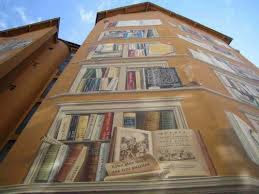 The 'Mur des Ecrivains' was painted by 'Cité de la Création' artists on a building on the corner of rue de la Platière and quai de la Pêcherie. It features references to about 300 writers who were born in Lyonor worked there. It isn't easy but if you look carefull you can see references to Frédéric Dard (the prolific crime writer of the San Antonio series), poetess Louise Labé, Rabelais and Voltaire, and to Saint-Exupery - French aristocrat, writer, poet, and pioneering aviator and author of 'Le Petit Prince'.
The 'Mur des Ecrivains' was painted by 'Cité de la Création' artists on a building on the corner of rue de la Platière and quai de la Pêcherie. It features references to about 300 writers who were born in Lyonor worked there. It isn't easy but if you look carefull you can see references to Frédéric Dard (the prolific crime writer of the San Antonio series), poetess Louise Labé, Rabelais and Voltaire, and to Saint-Exupery - French aristocrat, writer, poet, and pioneering aviator and author of 'Le Petit Prince'.
On the ground floor you can see three book shops and a postman.
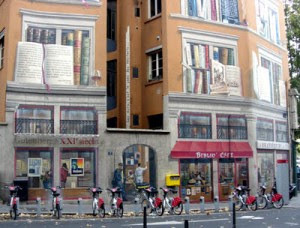
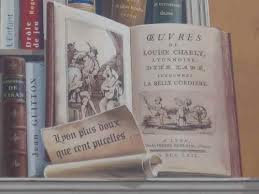
I couldn't resist including this powerful and passionate poem by sixteenth-century poetess Louise Labé.
 Sonnet II - Your Cold, Appraising Eyes
Sonnet II - Your Cold, Appraising Eyes
Your cold, appraising eyes entice me still
And cause a hundred thousand sighs. Again,
And yet again, I wait and wait in vain.
The night is dark, the way is all uphill.
And when I dream about you, I am filled
With ceaseless turmoil and long-stifled pain.
Then, on a sudden, flashing through my brain,
I see my fate, and it’s a bitter pill.
Into the deep of night, I speak your name.
My hard-fought struggle with the gentle art
Of making verses cannot long subdue
All passion and desire. A fit of flame
Flares up, ignites, and burns within my heart.
Would that one red-hot spark might fly on you!
Another very famous mural is The 'Mur des Lyonnais', also painted by 'Cité de la Création. Located on the corner of 49 Quai Saint Vincent and 2 Rue de la Martinière, it features 30 famous people from Lyon on a surface of 800 m2.
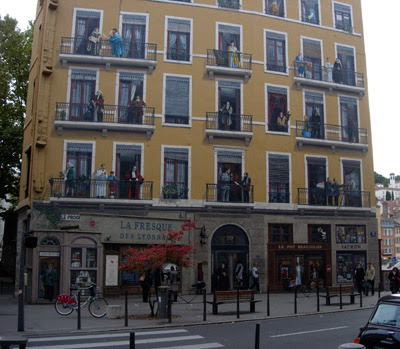
 You will find there Sainte Blandine, one of the first Christian martyrs of Lyon, restaurateur Paul Bocuse, the Lumière brothers (who played a crucial role in the development of photography and the cinema), 19th century physician Claude Bermand, Laurent Mourguet who created the famous Canut puppet Guignol and many others.
You will find there Sainte Blandine, one of the first Christian martyrs of Lyon, restaurateur Paul Bocuse, the Lumière brothers (who played a crucial role in the development of photography and the cinema), 19th century physician Claude Bermand, Laurent Mourguet who created the famous Canut puppet Guignol and many others.
I will also mention Juliette Récamier who was born in 1777 in Lyon and held an illustrious 'salon' in Parisin the early 19th century, just because she gave her name to the secondary school I attended!


The oldest, largest and most famous mural is the 'Mur des Canuts', located of course in the Croix-Rousse district of Lyon, where so many silk-workers lived and worked. It was the Cité de la Création's first mural and the one which made them famous all over the world. Now, what is real and what is just a painting? I guess you'll have to go to Lyon to find out!
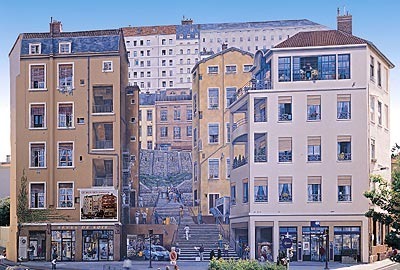 There are many more murals to discover in Lyon.
There are many more murals to discover in Lyon.
For more information, visit http://www.en.lyon-france.com/
 The 'Mur des Ecrivains' was painted by 'Cité de la Création' artists on a building on the corner of rue de la Platière and quai de la Pêcherie. It features references to about 300 writers who were born in Lyonor worked there. It isn't easy but if you look carefull you can see references to Frédéric Dard (the prolific crime writer of the San Antonio series), poetess Louise Labé, Rabelais and Voltaire, and to Saint-Exupery - French aristocrat, writer, poet, and pioneering aviator and author of 'Le Petit Prince'.
The 'Mur des Ecrivains' was painted by 'Cité de la Création' artists on a building on the corner of rue de la Platière and quai de la Pêcherie. It features references to about 300 writers who were born in Lyonor worked there. It isn't easy but if you look carefull you can see references to Frédéric Dard (the prolific crime writer of the San Antonio series), poetess Louise Labé, Rabelais and Voltaire, and to Saint-Exupery - French aristocrat, writer, poet, and pioneering aviator and author of 'Le Petit Prince'. On the ground floor you can see three book shops and a postman.


I couldn't resist including this powerful and passionate poem by sixteenth-century poetess Louise Labé.
 Sonnet II - Your Cold, Appraising Eyes
Sonnet II - Your Cold, Appraising Eyes
Your cold, appraising eyes entice me still
And cause a hundred thousand sighs. Again,
And yet again, I wait and wait in vain.
The night is dark, the way is all uphill.
And when I dream about you, I am filled
With ceaseless turmoil and long-stifled pain.
Then, on a sudden, flashing through my brain,
I see my fate, and it’s a bitter pill.
Into the deep of night, I speak your name.
My hard-fought struggle with the gentle art
Of making verses cannot long subdue
All passion and desire. A fit of flame
Flares up, ignites, and burns within my heart.
Would that one red-hot spark might fly on you!
Another very famous mural is The 'Mur des Lyonnais', also painted by 'Cité de la Création. Located on the corner of 49 Quai Saint Vincent and 2 Rue de la Martinière, it features 30 famous people from Lyon on a surface of 800 m2.

 You will find there Sainte Blandine, one of the first Christian martyrs of Lyon, restaurateur Paul Bocuse, the Lumière brothers (who played a crucial role in the development of photography and the cinema), 19th century physician Claude Bermand, Laurent Mourguet who created the famous Canut puppet Guignol and many others.
You will find there Sainte Blandine, one of the first Christian martyrs of Lyon, restaurateur Paul Bocuse, the Lumière brothers (who played a crucial role in the development of photography and the cinema), 19th century physician Claude Bermand, Laurent Mourguet who created the famous Canut puppet Guignol and many others. I will also mention Juliette Récamier who was born in 1777 in Lyon and held an illustrious 'salon' in Parisin the early 19th century, just because she gave her name to the secondary school I attended!


The oldest, largest and most famous mural is the 'Mur des Canuts', located of course in the Croix-Rousse district of Lyon, where so many silk-workers lived and worked. It was the Cité de la Création's first mural and the one which made them famous all over the world. Now, what is real and what is just a painting? I guess you'll have to go to Lyon to find out!
 There are many more murals to discover in Lyon.
There are many more murals to discover in Lyon. For more information, visit http://www.en.lyon-france.com/
Published on May 13, 2013 10:46
April 27, 2013
Pardon my French (Part II)!
Pardon my French (Part II)
As promised, more French tit-bits or French-related phrases, courtesy of the wonderful 6th edition of the Brewer's Dictionary of Phrases and Fables, first published in 1870.
Today is G to Z
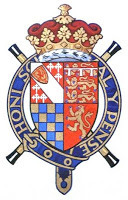 The Most Noble Order of the Garter, which is the highest order of knighthood in Great Britainand the world, instituted by King Edward III about 1348 (then reconstituted in 1805 and 1831) and which only admits royalty amongst its members. We all know that the motto of the order is 'Honi soit qui mal y pense' (shame to him who thinks evil of it), but where does it come from? Well, according to popular legend, Joan, Countess of Salisbury, accidentally slipped her garter at a court ball. It was picked up by the king who gallantly diverted the attention of the guests from the countess by slipping it around his own knee and saying as he did so: 'Honi soit qui mal y pense.'
The Most Noble Order of the Garter, which is the highest order of knighthood in Great Britainand the world, instituted by King Edward III about 1348 (then reconstituted in 1805 and 1831) and which only admits royalty amongst its members. We all know that the motto of the order is 'Honi soit qui mal y pense' (shame to him who thinks evil of it), but where does it come from? Well, according to popular legend, Joan, Countess of Salisbury, accidentally slipped her garter at a court ball. It was picked up by the king who gallantly diverted the attention of the guests from the countess by slipping it around his own knee and saying as he did so: 'Honi soit qui mal y pense.' In France there are still wedding receptions where the poor bride has to stand on a table, lift the hem of her wedding dress and push her garter up from the ankle to the top of her thigh as guests put money into a pot or a hat and shout encouragements (or salacious comments). I remember a wedding where the bride was in tears as the groom urged her to keep going so that they would have more money! What a way to start married life...
The Guillotine, named after its inventor Joseph Ignace Guillotin, a French physician. It was introduced it in April 1792 to avoid 'unnecessary suffering'.
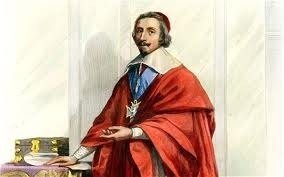 The Immortals or 'Les Immortels' are the forty members of the French Academywhose job is to write the dictionary of the French language and allocate various literary prizes. The Academy was first introduced by the Cardinal Richelieu in 1635, then reintroduced in 1816. It is an honour to be voted into the 'Academie Française' and once you are in, you cannot be dismissed. The 'Academiciens' meet every Thursday afternoon behind closed doors and only have one public session a year, in December. A Lamourette Kiss(isn't that a lovely word?) is used to denote an insincere reconciliation between two opponents. From the Abbé Lamourette who in July 1792 urged the different factions of the Legislative Assembly to lay aside their differences and give the kiss of peace. It didn't work for very long.
The Immortals or 'Les Immortels' are the forty members of the French Academywhose job is to write the dictionary of the French language and allocate various literary prizes. The Academy was first introduced by the Cardinal Richelieu in 1635, then reintroduced in 1816. It is an honour to be voted into the 'Academie Française' and once you are in, you cannot be dismissed. The 'Academiciens' meet every Thursday afternoon behind closed doors and only have one public session a year, in December. A Lamourette Kiss(isn't that a lovely word?) is used to denote an insincere reconciliation between two opponents. From the Abbé Lamourette who in July 1792 urged the different factions of the Legislative Assembly to lay aside their differences and give the kiss of peace. It didn't work for very long.A la Lanterne! Or Hang him from the lamp-post! A cry and custom introduced in Paris during the French Revolution. Many of Paris' street lamps were hung from iron brackets very suitable for that sinister purpose.
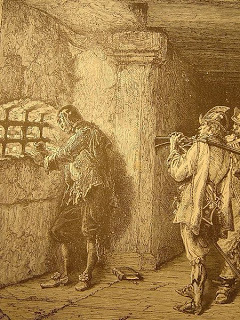 L'Homme au Masque de Fer (The Man in the Iron Mask). I have always been fascinated by the story, the legend of the mysterious individual held for over forty years as a State prisoner by Louis XIV at Pignerol and other prisons, and who ultimately died at La Bastille on November 19th 1703, with his identity still undisclosed. His name was given as 'Marchiali' when he was buried. No one knows to this day who he was. Some suggested that he was the King's twin brother, or even an older brother fathered by the Cardinal Mazarin or the Duke of Buckingham. Others that he was the King's own natural son by Madame de La Valière. It is now considered probable that he was the Count Girolamo Mattioli, Minister to the Duke of Mantua, who acted treacherously towards King Louis XIV by refusing to honour a treaty.
L'Homme au Masque de Fer (The Man in the Iron Mask). I have always been fascinated by the story, the legend of the mysterious individual held for over forty years as a State prisoner by Louis XIV at Pignerol and other prisons, and who ultimately died at La Bastille on November 19th 1703, with his identity still undisclosed. His name was given as 'Marchiali' when he was buried. No one knows to this day who he was. Some suggested that he was the King's twin brother, or even an older brother fathered by the Cardinal Mazarin or the Duke of Buckingham. Others that he was the King's own natural son by Madame de La Valière. It is now considered probable that he was the Count Girolamo Mattioli, Minister to the Duke of Mantua, who acted treacherously towards King Louis XIV by refusing to honour a treaty. La Bibliothèque Mazarine was the first public library in Paris, and was founded thanks to the 40,000 books the Cardinal gave the city on his death in 1661.
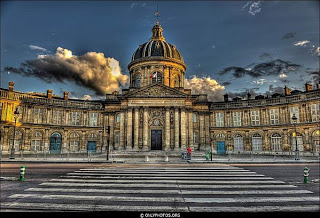
Montjoie Saint Deniswas the war-cry of the French, and Montjoie was the battle cry of French heralds at tournaments and the title of the French king of arms.
Parole. A verbal promise given by a soldier that he will not abuse his leave of absence or by a prisoner of war that he will not attempt to escape. I only put this one into the post so that I could link to this absolutely great (and just a little cheesy) song'Parole' sung in the seventies by Dalida and the impossibly handsome Alain Delon. Of course, in the song, 'Parole' only means 'words' or 'empty promises'. Enjoy!!! http://www.youtube.com/watch?v=_ifJapuqYiU

This is the Court of King Pétaud, where everyone is master! This French proverb means that there is no order or discipline. Le roi Pétaud was the title of the chief who was elected by the fraternity of the beggars in medieval France, and in whose court all were equal.
To do something with sang-froid is to remain cool and collected and how no sign of agitation or excitement.
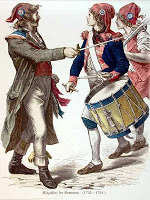 Sans Culottes(without knee-breeches, therefore not from the upper classes or the aristocracy). This was the name given during the French Revolution to the extremists of the working classes. When the Revolutionary Calendar was created in 1792 (see my earlier post from July 2012), five days of holiday were added after the last month of the year, Fructidor (which would be in September), which were called the Sans Culottides .
Sans Culottes(without knee-breeches, therefore not from the upper classes or the aristocracy). This was the name given during the French Revolution to the extremists of the working classes. When the Revolutionary Calendar was created in 1792 (see my earlier post from July 2012), five days of holiday were added after the last month of the year, Fructidor (which would be in September), which were called the Sans Culottides .Do you have any other French phrases or sayings? If you do, I would be delighted if you could leave a comment.
Published on April 27, 2013 08:34
April 16, 2013
Pardon my French!
Here is a post for people who are fascinated by language and how it evolves, who wonder where these French words and phrases used in English come from, or for writers who need to put a bit of French into their story or dialogues for authenticity.
The following entries are courtesy of the wonderful 'Brewer's Dictionary of Phrase and Fable',6th edition, published by William Clowes and Sons Ltd, London in 1962, which I recently came across in a sale of old library books, and which smells so musty I sneeze every time I open it!
Today, we are looking at A to F! All these phrases and words are absolutely not related but taken at random.
Ame damnée, a lost, cursed soul.
Amende honorable. An anglicised French phrase meaning a full and frank apology. In medieval France it was a degrading punishment inflicted on traitors, parricides and sacrilegious persons, who were forced to appear at court with a rope around their neck and stripped to their shirt, and made to beg the pardon of God, the King and the court.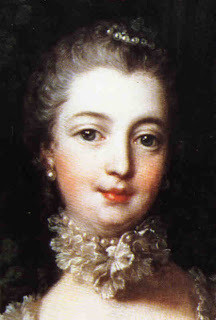 Après moi le déluge.The thing to say when you don't care about what happens after your death. It is recorded that Madame de Pompadour (1721-64) who was King Louis XV's mistress, said 'Après nous le déluge' when remonstrated about the extravagance of the court's expenses. Barbe Bleue (Bluebeard). Now who was he and why do every French children know and fear him, a little like the bogeyman? Giles de Retz, Marquis de Laval (no relation to me, fortunately!) is supposed to be the original Barbe Bleue. He lived at Machecoul in Brittanyand was accused of murdering six of his seven wives. He was ultimately strangled and burned in 1440. Charles Perrault later wrote the tale of Bluebeard in his Comtes du Temps(1697).
Après moi le déluge.The thing to say when you don't care about what happens after your death. It is recorded that Madame de Pompadour (1721-64) who was King Louis XV's mistress, said 'Après nous le déluge' when remonstrated about the extravagance of the court's expenses. Barbe Bleue (Bluebeard). Now who was he and why do every French children know and fear him, a little like the bogeyman? Giles de Retz, Marquis de Laval (no relation to me, fortunately!) is supposed to be the original Barbe Bleue. He lived at Machecoul in Brittanyand was accused of murdering six of his seven wives. He was ultimately strangled and burned in 1440. Charles Perrault later wrote the tale of Bluebeard in his Comtes du Temps(1697).
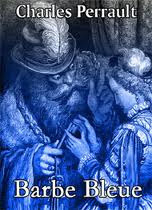
Billet doux - a short letter, a message of love. Below is the painting 'Billet Doux' by Boucher 1754.
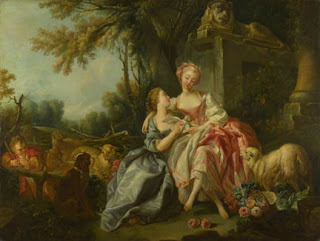
Bon mot - a clever, witty remark.
Bon Vivant. Someone who indulges in all good of the table. A stronger expression is Bon Viveur, which suggests the pursuit of other pleasures!
Brouhaha (I just love that word). A noisy or excited reaction or response. Late 19th century French word. Lettres de Cachet (sealed letters). Under the old French regime, they were warrants sealed with the king's seal in which the name of the 'beneficiary' was often left blank. They were very often used to send political opponents to the Bastille or other prisons. They were finally abolished during the French revolution, in 1790.
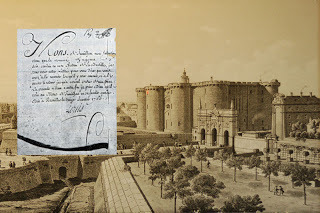
Cheval de Batailleis someone's favourite subject.
Chevalier d'Industrieis someone who lives by his wits, a swindler, an adventurer. In his 1750 ' Letters to his Son, Chesterfield warned against them and urged 'Be cautiously upon your guard against the infinite number of fine-dressed and fine-spoken chevaliers d'industrie and aventuriers which swarm at Paris.' I didn't know that one.
Coup d'essai is a trial piece, a practice. Coup de grâce is the finishing stroke, the stroke or mercy. When a criminal was tortured by the wheel or otherwise, the executioner gave him the 'coup de grâce' to put him out of his misery.
Coup de pied de l'âne. Literally, a kick from the ass's hoof, and figuratively a blow given to a vanquished or fallen man, a cowardly blow, or an insult given to someone who is in no position to retaliate. It is an allusion to 'The Sick Lion' Aesop, which goes like this: A Lion had come to the end of his days and lay sick unto death at the mouth of his cave, gasping for breath. The animals, his subjects, came round him and drew nearer as he grew more and more helpless. When they saw him on the point of death they thought to themselves: “Now is the time to pay off old grudges.” So the Boar came up and drove at him with his tusks; then a Bull gored him with his horns; still the Lion lay helpless before them: so the Ass, feeling quite safe from danger, came up, and turning his tail to the Lion kicked up his heels into his face. “This is a double death,” growled the Lion.Only cowards insult dying majesty. Cri du coeur - a heartfelt plea. Croquemitaine. A hobgoblin, an evil spirit or ugly monster used by adults to frighten children into good behaviour. A French nursery rhyme went like this: 'Connaissez-vous Croquemitaine, Miton Miton Mitaine, il a deux yeux grands et perçants, une grosse bouche, de grande dents.' En grande toilette, en grande tenue - dressed for a grand occasion.En papillotes - in a state of undress, literally sill wearing curl-papers in your hair.
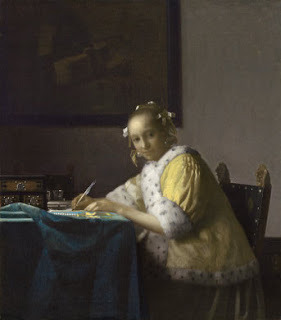 En passant - by the way Faux-pas - a social blunder, causing embarrassment and loss of face.
En passant - by the way Faux-pas - a social blunder, causing embarrassment and loss of face.
And finally, these lovely 'French' phrases: To take French leave.To leave without permission, without saying good bye to anyone, or to slip away unnoticed. In 18th century Franceit was a custom to leave an official event or a banquet without saying goodbye to the host. This phrase was first recorded after the Seven Years' War. There was a time when there was no love lost between Franceand Englandand this kind of backhanded compliment between the two countries were very common. The French reverse the 'compliment' and say 'filer à l'anglaise' (to escape like an Englishman). And what about the 'French gout' (venereal disease), or a 'French letter' for a condom (we call it 'capote anglaise' which means 'English overcoat')? I will be back soon with words and phrases from F to Z, but in the meantime if there are any expressions you particularly like and I have omitted here, please feel free to leave a comment.
The following entries are courtesy of the wonderful 'Brewer's Dictionary of Phrase and Fable',6th edition, published by William Clowes and Sons Ltd, London in 1962, which I recently came across in a sale of old library books, and which smells so musty I sneeze every time I open it!
Today, we are looking at A to F! All these phrases and words are absolutely not related but taken at random.
Ame damnée, a lost, cursed soul.
Amende honorable. An anglicised French phrase meaning a full and frank apology. In medieval France it was a degrading punishment inflicted on traitors, parricides and sacrilegious persons, who were forced to appear at court with a rope around their neck and stripped to their shirt, and made to beg the pardon of God, the King and the court.
 Après moi le déluge.The thing to say when you don't care about what happens after your death. It is recorded that Madame de Pompadour (1721-64) who was King Louis XV's mistress, said 'Après nous le déluge' when remonstrated about the extravagance of the court's expenses. Barbe Bleue (Bluebeard). Now who was he and why do every French children know and fear him, a little like the bogeyman? Giles de Retz, Marquis de Laval (no relation to me, fortunately!) is supposed to be the original Barbe Bleue. He lived at Machecoul in Brittanyand was accused of murdering six of his seven wives. He was ultimately strangled and burned in 1440. Charles Perrault later wrote the tale of Bluebeard in his Comtes du Temps(1697).
Après moi le déluge.The thing to say when you don't care about what happens after your death. It is recorded that Madame de Pompadour (1721-64) who was King Louis XV's mistress, said 'Après nous le déluge' when remonstrated about the extravagance of the court's expenses. Barbe Bleue (Bluebeard). Now who was he and why do every French children know and fear him, a little like the bogeyman? Giles de Retz, Marquis de Laval (no relation to me, fortunately!) is supposed to be the original Barbe Bleue. He lived at Machecoul in Brittanyand was accused of murdering six of his seven wives. He was ultimately strangled and burned in 1440. Charles Perrault later wrote the tale of Bluebeard in his Comtes du Temps(1697).

Billet doux - a short letter, a message of love. Below is the painting 'Billet Doux' by Boucher 1754.

Bon mot - a clever, witty remark.
Bon Vivant. Someone who indulges in all good of the table. A stronger expression is Bon Viveur, which suggests the pursuit of other pleasures!
Brouhaha (I just love that word). A noisy or excited reaction or response. Late 19th century French word. Lettres de Cachet (sealed letters). Under the old French regime, they were warrants sealed with the king's seal in which the name of the 'beneficiary' was often left blank. They were very often used to send political opponents to the Bastille or other prisons. They were finally abolished during the French revolution, in 1790.

Cheval de Batailleis someone's favourite subject.
Chevalier d'Industrieis someone who lives by his wits, a swindler, an adventurer. In his 1750 ' Letters to his Son, Chesterfield warned against them and urged 'Be cautiously upon your guard against the infinite number of fine-dressed and fine-spoken chevaliers d'industrie and aventuriers which swarm at Paris.' I didn't know that one.
Coup d'essai is a trial piece, a practice. Coup de grâce is the finishing stroke, the stroke or mercy. When a criminal was tortured by the wheel or otherwise, the executioner gave him the 'coup de grâce' to put him out of his misery.
Coup de pied de l'âne. Literally, a kick from the ass's hoof, and figuratively a blow given to a vanquished or fallen man, a cowardly blow, or an insult given to someone who is in no position to retaliate. It is an allusion to 'The Sick Lion' Aesop, which goes like this: A Lion had come to the end of his days and lay sick unto death at the mouth of his cave, gasping for breath. The animals, his subjects, came round him and drew nearer as he grew more and more helpless. When they saw him on the point of death they thought to themselves: “Now is the time to pay off old grudges.” So the Boar came up and drove at him with his tusks; then a Bull gored him with his horns; still the Lion lay helpless before them: so the Ass, feeling quite safe from danger, came up, and turning his tail to the Lion kicked up his heels into his face. “This is a double death,” growled the Lion.Only cowards insult dying majesty. Cri du coeur - a heartfelt plea. Croquemitaine. A hobgoblin, an evil spirit or ugly monster used by adults to frighten children into good behaviour. A French nursery rhyme went like this: 'Connaissez-vous Croquemitaine, Miton Miton Mitaine, il a deux yeux grands et perçants, une grosse bouche, de grande dents.' En grande toilette, en grande tenue - dressed for a grand occasion.En papillotes - in a state of undress, literally sill wearing curl-papers in your hair.
 En passant - by the way Faux-pas - a social blunder, causing embarrassment and loss of face.
En passant - by the way Faux-pas - a social blunder, causing embarrassment and loss of face.And finally, these lovely 'French' phrases: To take French leave.To leave without permission, without saying good bye to anyone, or to slip away unnoticed. In 18th century Franceit was a custom to leave an official event or a banquet without saying goodbye to the host. This phrase was first recorded after the Seven Years' War. There was a time when there was no love lost between Franceand Englandand this kind of backhanded compliment between the two countries were very common. The French reverse the 'compliment' and say 'filer à l'anglaise' (to escape like an Englishman). And what about the 'French gout' (venereal disease), or a 'French letter' for a condom (we call it 'capote anglaise' which means 'English overcoat')? I will be back soon with words and phrases from F to Z, but in the meantime if there are any expressions you particularly like and I have omitted here, please feel free to leave a comment.
Published on April 16, 2013 13:16
March 11, 2013
Voices
Avec le temps...
Avec le temps, va, tout s´en va
On oublie les passions et l´on oublie les voix
Qui vous disaient tout bas les mots des pauvres gens
Ne rentre pas trop tard, surtout ne prends pas froid
This is an extract of the beautiful, poignant song by Léo Ferré 'Avec le temps', which I think is one of the most beautiful songs ever written. I don't however agree with him when he says that time erases everything, including the voices of the people we loved. There are voices I still hear to this day and I know I'll never forget. They ring so clear sometimes it's as if the people they belonged to are right next to me, and I am transported back to a certain place or moment in time. I can still hear my mother call in the stairs to say tea was ready, or tell my sisters and I we should smile more because 'you don't catch flies with vinegar' (the flies being husbands, of course!). I also hear her laugh, her wonderful, infectious laugh.
No, I don't think voices die.
I had some very sad news tonight. A dear friend has gone, someone I did not see very often but I had known since childhood. I will hear his voice for a long, long time to come.
Here is 'Avec le temps' sung by Dalida

http://www.youtube.com/watch?v=KaSS2fA4b68
Avec le temps, va, tout s´en va
On oublie les passions et l´on oublie les voix
Qui vous disaient tout bas les mots des pauvres gens
Ne rentre pas trop tard, surtout ne prends pas froid
This is an extract of the beautiful, poignant song by Léo Ferré 'Avec le temps', which I think is one of the most beautiful songs ever written. I don't however agree with him when he says that time erases everything, including the voices of the people we loved. There are voices I still hear to this day and I know I'll never forget. They ring so clear sometimes it's as if the people they belonged to are right next to me, and I am transported back to a certain place or moment in time. I can still hear my mother call in the stairs to say tea was ready, or tell my sisters and I we should smile more because 'you don't catch flies with vinegar' (the flies being husbands, of course!). I also hear her laugh, her wonderful, infectious laugh.
No, I don't think voices die.
I had some very sad news tonight. A dear friend has gone, someone I did not see very often but I had known since childhood. I will hear his voice for a long, long time to come.
Here is 'Avec le temps' sung by Dalida

http://www.youtube.com/watch?v=KaSS2fA4b68
Published on March 11, 2013 15:03
February 16, 2013
A tour of some locations in 'The Lion's Embrace'
Today I am posting a few photos of some of the locations in 'The Lion's Embrace'.
First Algiers, where the story starts, and more particularly the Kasbah, the old town.
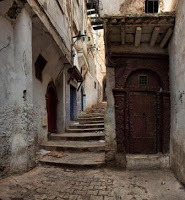
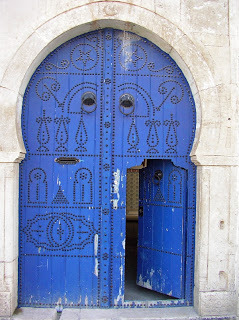
Then the oasis of Bou Saada, 'The City of Happiness', which inspired so many nineteenth century artists, including Etienne Dinet who is buried there.
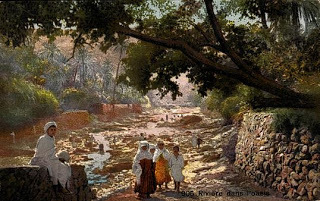
The painting above was not from Dinet, but this one is.
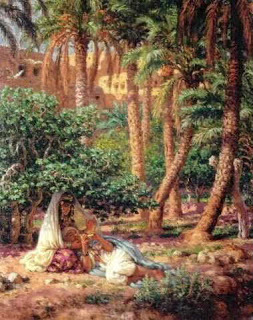 And lastly the beautiful and mysterious Hoggar mountains in the far South of Algeria. I never tire of looking at these photos and hope that one day, I will be able to go there myself.
And lastly the beautiful and mysterious Hoggar mountains in the far South of Algeria. I never tire of looking at these photos and hope that one day, I will be able to go there myself.

 I hope you enjoyed these pictures. I will post more soon!
I hope you enjoyed these pictures. I will post more soon!
'The Lion's Embrace' - Blurb:
Algiers, 1845. Arrogant, selfish and dangerous, Lucas Saintclair is everything Harriet Montague dislikes in a man. He is also the best guide in the whole of the Barbary States, the only man who can rescue her archaeologist father from the gang of Tuareg fighters that has kidnapped him. As Harriet embarks on a perilous journey across Algeria with Saintclair and Archibald Drake, her father’s most trusted friend, she discovers a bewitching but brutal land where nothing is what it seems. Who are these men intent on stealing her father’s ransom? What was her father hoping to find in Tuareg queen Tin Hinan’s tomb? Is Lucas Saintclair really as callous as he claims—or is he a man haunted by a past he cannot forgive? Dangerous passions engulf Harriet’s heart in the heat of the Sahara. Secrets of lost treasures, rebel fighters, and a sinister criminal brotherhood threaten her life and the life of the man she loves.
Does forever lie in the lion’s embrace?
The Lion's Embrace is available from
https://museituppublishing.com/
http://www.amazon.com/The-Lions-Embrace-ebook/dp/B00BACDSK6
and http://www.amazon.co.uk/s/ref=nb_sb_ss_i_0_15?url=search-alias%3Ddigital-text&field-keywords=marie+laval+the+lion%27s+embrace&sprefix=marie+laval+the%2Cdigital-text%2C240
First Algiers, where the story starts, and more particularly the Kasbah, the old town.


Then the oasis of Bou Saada, 'The City of Happiness', which inspired so many nineteenth century artists, including Etienne Dinet who is buried there.

The painting above was not from Dinet, but this one is.
 And lastly the beautiful and mysterious Hoggar mountains in the far South of Algeria. I never tire of looking at these photos and hope that one day, I will be able to go there myself.
And lastly the beautiful and mysterious Hoggar mountains in the far South of Algeria. I never tire of looking at these photos and hope that one day, I will be able to go there myself. 
 I hope you enjoyed these pictures. I will post more soon!
I hope you enjoyed these pictures. I will post more soon!'The Lion's Embrace' - Blurb:
Algiers, 1845. Arrogant, selfish and dangerous, Lucas Saintclair is everything Harriet Montague dislikes in a man. He is also the best guide in the whole of the Barbary States, the only man who can rescue her archaeologist father from the gang of Tuareg fighters that has kidnapped him. As Harriet embarks on a perilous journey across Algeria with Saintclair and Archibald Drake, her father’s most trusted friend, she discovers a bewitching but brutal land where nothing is what it seems. Who are these men intent on stealing her father’s ransom? What was her father hoping to find in Tuareg queen Tin Hinan’s tomb? Is Lucas Saintclair really as callous as he claims—or is he a man haunted by a past he cannot forgive? Dangerous passions engulf Harriet’s heart in the heat of the Sahara. Secrets of lost treasures, rebel fighters, and a sinister criminal brotherhood threaten her life and the life of the man she loves.
Does forever lie in the lion’s embrace?
The Lion's Embrace is available from
https://museituppublishing.com/
http://www.amazon.com/The-Lions-Embrace-ebook/dp/B00BACDSK6
and http://www.amazon.co.uk/s/ref=nb_sb_ss_i_0_15?url=search-alias%3Ddigital-text&field-keywords=marie+laval+the+lion%27s+embrace&sprefix=marie+laval+the%2Cdigital-text%2C240
Published on February 16, 2013 11:26
February 2, 2013
'The Lion's Embrace' published!
My second historical romance, 'The Lion's Embrace', was released yesterday and is now available from MuseitUp Publishing!
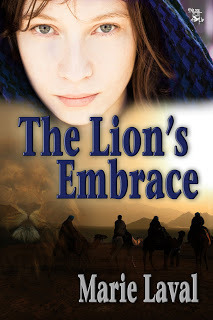 Blurb:
Blurb:
Arrogant, selfish and dangerous, Lucas Saintclair is everything Harriet Montague dislikes in a man. He is also the best guide in the whole of the Barbary States, the only man who can rescue her archaeologist father from the gang of Tuareg fighters that has kidnapped him. As Harriet embarks on a perilous journey across Algeria with Saintclair and Archibald Drake, her father’s most trusted friend, she discovers a bewitching but brutal land where nothing is what it seems. Who are these men intent on stealing her father’s ransom? What was her father hoping to find in Tuareg queen Tin Hinan’s tomb? Is Lucas Saintclair really as callous as he claims—or is he a man haunted by a past he cannot forgive? Dangerous passions engulf Harriet’s heart in the heat of the Sahara. Secrets of lost treasures, rebel fighters, and a sinister criminal brotherhood threaten her life and the life of the man she loves.
Does forever lie in the lion’s embrace?
And an excerpt too!
It was a narrow valley where the river curved into a bend, secluded by thick bushes and reeds. After a quick glance around to make sure she was alone, she stripped and walked naked into the water. It was so cold it took her breath away. She gritted her teeth, clutched her bar of soap, and walked into the river until the water reached her hips. Getting rid of the grime and sweat of the past few days was worth the torture… Holding her breath, she dipped into the water before standing and lathering soap over her body and her hair. The light was changing. A transparent gold dust touched the hillside, the top of the trees. The sunrise streaked the sky with red, orange, and pink hues, reflecting into the river. She was alone in the world, in a bubble hovering between sky and water. It was then she heard the growling. Stones tumbled down the hillside seconds before a male lion jumped onto the river bank, sleek and agile. It approached the river and started drinking. It hadn’t seen her. Yet.Her heart thumping with terror, she ducked under the water very slowly, careful not to make any ripples on the surface. How long would she have to hold her breath? How long did it take a lion to quench its thirst after a night spent hunting? What if it saw her and came after her? Did lions, like cats, hate water? Her lungs started to burn, she felt close to choking. When she couldn’t hold on any longer, she popped her head above the water and took a long, long breath.The lion had gone. “You are one lucky woman,” a voice called from the bank. Still breathless, she spun round. Saintclair crouched near the water, a knife in one hand, a pistol in the other. “How l-long have you be-been here?” she stuttered, her teeth chattering from cold and shock.“Long enough.” Had he watched her undress and get into the water? Actually, she’d rather not know. She moved her legs and arms, numb and stiff with cold. “Is it safe? Has the lion gone?” She looked toward the hillside.“You’re safe. From the lion, that is.” He narrowed his eyes. “I, on the other hand, might just want to throttle you for disregarding my orders. I knew taking you with us was a mistake. I knew you were stubborn. I didn’t realize just how reckless, how stupid you were. You could have been mauled to death just then.” “I handled the lion perfectly well on my own.” She tilted her chin. Her heart had almost stopped with fright, but there was no reason to tell him.He stood up, put his pistol in the holster on his hip, slid the knife in his boot, and walked toward the edge of the water. His face was so tense, his eyes so steely, that she recoiled. He was going to walk into the river, pull her out and…“Damn it, woman, you were told not to leave the camp alone. You were warned about lions roaming this area. There are all sorts of dangers here—wild animals, snakes, scorpions.” He looked up towards the hillside. “Raiders.”She swallowed hard, followed his gaze toward the top of the hills.He shook his head. “If that lion hadn’t been so old and half-blind, you wouldn’t be talking to me now.”“It seemed pretty sprightly to me,” she muttered. He snorted.“Get out. You’re freezing, and your lips are blue,” he said without a trace of sympathy in his voice.She shivered, nodded. “Only if you turn round.”“It’s a bit late to play the prude,” he muttered, but he obliged and faced the other way. So he had seen her naked. Well, he wouldn’t see her now. She covered her chest with her arms and walked to the shore. She threw a nervous glance in his direction before stepping out of the water, but he remained immobile, his back to her, as if he had been turned into rock.She gathered her clothes as fast as she could, stumbling on pebbles in her haste, and chose a large bush behind which to get dressed. Her fingers were too cold, too stiff to fasten her tunic’s tiny buttons. She had to leave it open for now. She put her boots on and ventured out of the bushes. Saintclair took one look at her and snarled.“You can’t go back to camp half dressed.”She pulled her tunic across her chest to cover up, shifted uncomfortably on her feet.“I can’t do the buttons up,” she said, showing him her hands still red raw with cold. He tightened his lips but didn’t answer. The sun now peeped above the rugged hilltop, a huge orange ball setting the sky on fire. Dazzled, Harriet caught her breath. “This is…magnificent. We don’t have sunrises like that in England.”
He gazed at her face, at her eyes filled with wonder.“No but you have rain, summer storms.”He stepped closer and looked down into her eyes. “I always wanted to stand outside in a thunderstorm.” Her eyes were a rain cloud right now, cool and soothing. She smiled. “You might get hit by lightning.”“Maybe, but what a beautiful way to die,” he said. His breathing was a little faster, his gaze heavier.She parted her lips but didn’t answer. The colour of her cheeks deepened. In the opening of her tunic, the gold pendant gleamed against her milky white skin. His fingers itched to toy with it and bring it to his lips, still hot and fragrant from her body.
'The Lion's Embrace' is available from MuseitUp Publishing
MuseitUp Publishing The Lion's Embrace
 Blurb:
Blurb:Arrogant, selfish and dangerous, Lucas Saintclair is everything Harriet Montague dislikes in a man. He is also the best guide in the whole of the Barbary States, the only man who can rescue her archaeologist father from the gang of Tuareg fighters that has kidnapped him. As Harriet embarks on a perilous journey across Algeria with Saintclair and Archibald Drake, her father’s most trusted friend, she discovers a bewitching but brutal land where nothing is what it seems. Who are these men intent on stealing her father’s ransom? What was her father hoping to find in Tuareg queen Tin Hinan’s tomb? Is Lucas Saintclair really as callous as he claims—or is he a man haunted by a past he cannot forgive? Dangerous passions engulf Harriet’s heart in the heat of the Sahara. Secrets of lost treasures, rebel fighters, and a sinister criminal brotherhood threaten her life and the life of the man she loves.
Does forever lie in the lion’s embrace?
And an excerpt too!
It was a narrow valley where the river curved into a bend, secluded by thick bushes and reeds. After a quick glance around to make sure she was alone, she stripped and walked naked into the water. It was so cold it took her breath away. She gritted her teeth, clutched her bar of soap, and walked into the river until the water reached her hips. Getting rid of the grime and sweat of the past few days was worth the torture… Holding her breath, she dipped into the water before standing and lathering soap over her body and her hair. The light was changing. A transparent gold dust touched the hillside, the top of the trees. The sunrise streaked the sky with red, orange, and pink hues, reflecting into the river. She was alone in the world, in a bubble hovering between sky and water. It was then she heard the growling. Stones tumbled down the hillside seconds before a male lion jumped onto the river bank, sleek and agile. It approached the river and started drinking. It hadn’t seen her. Yet.Her heart thumping with terror, she ducked under the water very slowly, careful not to make any ripples on the surface. How long would she have to hold her breath? How long did it take a lion to quench its thirst after a night spent hunting? What if it saw her and came after her? Did lions, like cats, hate water? Her lungs started to burn, she felt close to choking. When she couldn’t hold on any longer, she popped her head above the water and took a long, long breath.The lion had gone. “You are one lucky woman,” a voice called from the bank. Still breathless, she spun round. Saintclair crouched near the water, a knife in one hand, a pistol in the other. “How l-long have you be-been here?” she stuttered, her teeth chattering from cold and shock.“Long enough.” Had he watched her undress and get into the water? Actually, she’d rather not know. She moved her legs and arms, numb and stiff with cold. “Is it safe? Has the lion gone?” She looked toward the hillside.“You’re safe. From the lion, that is.” He narrowed his eyes. “I, on the other hand, might just want to throttle you for disregarding my orders. I knew taking you with us was a mistake. I knew you were stubborn. I didn’t realize just how reckless, how stupid you were. You could have been mauled to death just then.” “I handled the lion perfectly well on my own.” She tilted her chin. Her heart had almost stopped with fright, but there was no reason to tell him.He stood up, put his pistol in the holster on his hip, slid the knife in his boot, and walked toward the edge of the water. His face was so tense, his eyes so steely, that she recoiled. He was going to walk into the river, pull her out and…“Damn it, woman, you were told not to leave the camp alone. You were warned about lions roaming this area. There are all sorts of dangers here—wild animals, snakes, scorpions.” He looked up towards the hillside. “Raiders.”She swallowed hard, followed his gaze toward the top of the hills.He shook his head. “If that lion hadn’t been so old and half-blind, you wouldn’t be talking to me now.”“It seemed pretty sprightly to me,” she muttered. He snorted.“Get out. You’re freezing, and your lips are blue,” he said without a trace of sympathy in his voice.She shivered, nodded. “Only if you turn round.”“It’s a bit late to play the prude,” he muttered, but he obliged and faced the other way. So he had seen her naked. Well, he wouldn’t see her now. She covered her chest with her arms and walked to the shore. She threw a nervous glance in his direction before stepping out of the water, but he remained immobile, his back to her, as if he had been turned into rock.She gathered her clothes as fast as she could, stumbling on pebbles in her haste, and chose a large bush behind which to get dressed. Her fingers were too cold, too stiff to fasten her tunic’s tiny buttons. She had to leave it open for now. She put her boots on and ventured out of the bushes. Saintclair took one look at her and snarled.“You can’t go back to camp half dressed.”She pulled her tunic across her chest to cover up, shifted uncomfortably on her feet.“I can’t do the buttons up,” she said, showing him her hands still red raw with cold. He tightened his lips but didn’t answer. The sun now peeped above the rugged hilltop, a huge orange ball setting the sky on fire. Dazzled, Harriet caught her breath. “This is…magnificent. We don’t have sunrises like that in England.”
He gazed at her face, at her eyes filled with wonder.“No but you have rain, summer storms.”He stepped closer and looked down into her eyes. “I always wanted to stand outside in a thunderstorm.” Her eyes were a rain cloud right now, cool and soothing. She smiled. “You might get hit by lightning.”“Maybe, but what a beautiful way to die,” he said. His breathing was a little faster, his gaze heavier.She parted her lips but didn’t answer. The colour of her cheeks deepened. In the opening of her tunic, the gold pendant gleamed against her milky white skin. His fingers itched to toy with it and bring it to his lips, still hot and fragrant from her body.
'The Lion's Embrace' is available from MuseitUp Publishing
MuseitUp Publishing The Lion's Embrace
Published on February 02, 2013 02:53
January 18, 2013
'The Lion's Embrace' now available for pre-order!
My second historical romance, 'The Lion's Embrace', is now available for pre-order at 20% off from https://museituppublishing.com/bookstore2/index.php?page=shop.product_details&flypage=flypage.tpl&product_id=655&category_id=205&manufacturer_id=227&option=com_virtuemart&Itemid=1
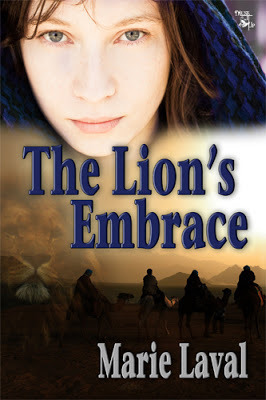
Blurb
Arrogant, selfish and dangerous, Lucas Saintclair is everything Harriet Montague dislikes in a man. He is also the best guide in the whole of the Barbary States, the only man who can rescue her archaeologist father from the gang of Tuareg fighters that has kidnapped him. As Harriet embarks on a perilous journey across Algeria with Saintclair and Archibald Drake, her father’s most trusted friend, she discovers a bewitching but brutal land where nothing is what it seems. Who are these men intent on stealing her father’s ransom? What was her father hoping to find in Tuareg queen Tin Hinan’s tomb? Is Lucas Saintclair really as callous as he claims—or is he a man haunted by a past he cannot forgive? Dangerous passions engulf Harriet’s heart in the heat of the Sahara. Secrets of lost treasures, rebel fighters, and a sinister criminal brotherhood threaten her life and the life of the man she loves.
Does forever lie in the lion’s embrace?
How I loved writing that story! I hope you will love reading it too.

Blurb
Arrogant, selfish and dangerous, Lucas Saintclair is everything Harriet Montague dislikes in a man. He is also the best guide in the whole of the Barbary States, the only man who can rescue her archaeologist father from the gang of Tuareg fighters that has kidnapped him. As Harriet embarks on a perilous journey across Algeria with Saintclair and Archibald Drake, her father’s most trusted friend, she discovers a bewitching but brutal land where nothing is what it seems. Who are these men intent on stealing her father’s ransom? What was her father hoping to find in Tuareg queen Tin Hinan’s tomb? Is Lucas Saintclair really as callous as he claims—or is he a man haunted by a past he cannot forgive? Dangerous passions engulf Harriet’s heart in the heat of the Sahara. Secrets of lost treasures, rebel fighters, and a sinister criminal brotherhood threaten her life and the life of the man she loves.
Does forever lie in the lion’s embrace?
How I loved writing that story! I hope you will love reading it too.
Published on January 18, 2013 14:20



